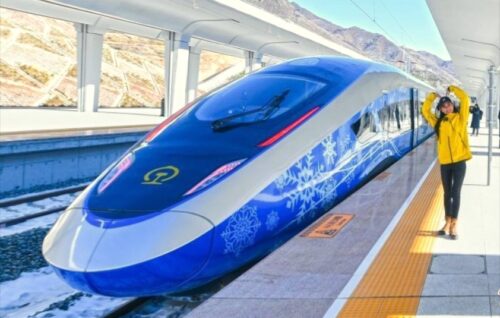The automobile industry very cruelly aborted train services in Montana.
The coming of the transcontinental railroads to Montana Territory in the 1880s is the single most transformational economic development in the entire history of Montana.
Such a disasterous anti-development decision (Montana ran innovative electric and even “snow powered” engines) stands to be reversed, given some very subtle signs of rail rebirth.
First, buried in a 2023 award interview, Katie Farmer (CEO of BNSF) calls out a Montana project as a top priority.
One of our challenges is communicating that relevancy and the importance of the rail industry to young people, because it’s not natural, per se, for people to think about it. We’re kind of unsung heroes. […] Also, while it’s not yet complete and yet to be approved by the Surface Transportation Board, bringing back Montana Rail Link into the BNSF network is something that all of us at BNSF will be proud of.
Second, some local editorials suggest rising support for a major passenger rail corridor.
…this state was built on railways. Beginning in 1880 when the tracks first linked us to the rest of the nation… For 100 years the major population centers of Montana were connected by passenger trains until service was cut in 1979. I can imagine the excitement of watching the “North Coast Hiawatha” pull into the local station. Before the cancellation of passenger service, Missoula, Butte, Bozeman and Billings had a train running through them three times per week. […] Of any route which wandered through Montana, why would we cut the one which passed through four of our biggest towns? Amtrak, with the help of growing ridership and a refortified budget, seems to have halted its retreat and is looking to regain lost ground.
All that being said, here’s the real buried lede: cars have proven to be death traps killing Montana.
The highways of Montana are among the deadliest in the United States; with the presence of a passenger rail route offering an alternative to highway travel, many anxious families seeing their children and loved ones off wouldn’t have to worry nearly as much about bad weather conditions, deer running onto the road, or reckless drivers.
Rail is showing other countries developing and moving ahead of America. China is just one example where 40 hour trips have been reduced to 8 hours by modern rail, high-throughput low-risk movement transforming their economy.
“I could feel the change in temperature from — 10 C in Beijing to more than 20 C in Guangzhou. I understood how the speed cut the journey time and distance, and how the high-speed railway brought people closer.” In the decade since it opened, the world’s longest high-speed railway line, running 2,298 kilometers, has recorded 1.69 billion passenger trips, according to China State Railway Group, the national railway operator.
Let me put it this way. One and a half billion trips at 350km/hr (217mph) for a decade where people could use the time to sleep, eat, work… with how many fatalities?
…there have been no serious incidents on the network since 2011.

Cars will never, ever achieve that level of performance or safety innovation.
Two kids among six dead in tragic 21-car Montana dust storm pileup.
Weather. Cars can’t handle it. Driverless cars? Forgetaboutit.
What’s the cost of the train? The better question is what’s the cost of not having a train. Montana has suffered extensively.
‘Fatality markers’ remind Montana drivers of tragic consequences. There are more than 2,500 of these white markers across the state. Wherever you go in the state of Montana, you can see little white markers along the road, shaped like a cross. Each marker stands where someone lost their life.
Montana has become a giant graveyard.
So many dead.
After dumping a huge amount of money into gasoline and cars, all if it gone in an instant — thousands of gravestones. So unnecessary.
It would be interesting if Montana reversed its steep taxation and abortion system known as automobiles, and instead developed freedom of movement into rail leadership in safety and efficiency. Someday it would mean a mesh design, and a corridor is a significant start.
If you’ve ever studied West Berlin’s Cold War rail routes interlocking with airstrips, and its “honor” ticket system, you know what real freedom of movement is all about.
There’s no question a modern passenger train with a proper path and timetable would make Montana the most attractive state for economic growth among it’s neighbors. With heavyweight BNSF throwing its giant hat in the ring, it even could become a global leader in transit innovation.